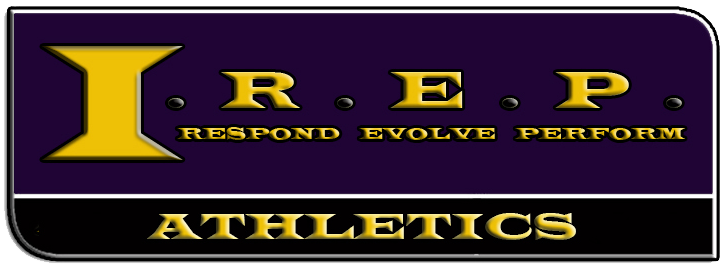 Understanding human physiology serves as the backbone for creating effective sports training programs. The intricacies of the human body’s response to exercise dictate how athletes can optimize their training and performance in their specific sports disciplines.
Understanding human physiology serves as the backbone for creating effective sports training programs. The intricacies of the human body’s response to exercise dictate how athletes can optimize their training and performance in their specific sports disciplines.
At the heart of physiological adaptations lies the concept of progressive overload, which refers to the gradual increase of stress placed upon the body during exercise training. This practice is pivotal in stimulating muscle growth, enhancing the efficiency of the cardiovascular system, and improving neuromuscular coordination. Muscular hypertrophy, the enlargement of muscle fibers, occurs as a result of repetitive mechanical stress and metabolic fatigue—central events in resistance training regimens.
In understanding the body’s energy systems—specifically, the phosphagen system, glycolysis, and oxidative phosphorylation—coaches can tailor training sessions to develop power and speed through anaerobic exercises, or increase endurance via aerobic workouts. These systems are not mutually exclusive, and many sports require a well-developed capacity in both anaerobic and aerobic systems for athletes to perform optimally.
A crucial physiological factor to consider is adaptation to training stress, which is governed by the General Adaptation Syndrome model, consisting of three main stages: the alarm reaction, resistance development, and exhaustion. Initially, when a new stress is applied, such as a higher weight load or an increased pace, the body experiences an alarm reaction. If this stress continues, the body moves into the resistance phase, adapting to the stress to cope better with future similar stressors. Without adequate recovery, however, the body may reach an exhaustion phase, leading to overtraining and potential injury—a state that well-structured programs are keen to avoid.
Rest and recovery are integral to any sports training program, as they allow the physiological adaptations from exercise stress to fully manifest. Recovery involves processes like protein synthesis, replenishment of energy stores, and the repair of damaged tissues. Implementing rest days and ensuring adequate sleep are paramount for athletes to reap the benefits of their laborious training and prevent overtraining syndrome.
The plasticity of the central nervous system (CNS) is a critical factor often understated in sports training. The CNS adapts to training loads by improving the efficiency of communication between the brain and muscles, known as neuromuscular adaptation. This fine-tuning enhances the athlete’s coordination, agility, and timing—all vital for achieving complex sport-specific movements.
Another physiological concern is the body’s endocrine responses to training, which involve various hormones that influence performance and recovery, including cortisol, testosterone, human growth hormone, and insulin. Effective sports training programs must strike a balance between exercise stress and recovery to optimize hormonal responses that favor muscle rebuilding and energy replenishment.
In the realm of hydration and electrolyte balance, physiology again takes center stage. Fluid loss and electrolyte depletion can impair an athlete’s performance significantly, making hydration strategies a critical aspect of training programs. Proper hydration maintains blood volume, regulates body temperature, and ensures the proper functioning of muscles and nerves.
Nutritional support also plays a crucial role in complementing the physiological effects of training. A diet tailored to an athlete’s specific requirements helps in maintaining energy levels, optimizing body composition, and reducing the time needed for recovery. Macronutrients—carbohydrates, proteins, and fats—are meticulously calculated and timed based on the training phases and individual athlete needs.
Periodization
 Periodization stands as a landmark principle in the design of sports training programs, existing as a strategic means of organizing an athlete’s training schedule to maximize performance and minimize the risk of overtraining. This disciplined approach to training necessitates a meticulously organized framework that orchestrates intensity, volume, and specificity of training to allow athletes to peak at the optimal moment, ideally coinciding with major competitions or sporting events.
Periodization stands as a landmark principle in the design of sports training programs, existing as a strategic means of organizing an athlete’s training schedule to maximize performance and minimize the risk of overtraining. This disciplined approach to training necessitates a meticulously organized framework that orchestrates intensity, volume, and specificity of training to allow athletes to peak at the optimal moment, ideally coinciding with major competitions or sporting events.
The concept of periodization functions by breaking down the training calendar into distinct cycles, each with its own unique focus and objectives. The macrocycle represents the longest of these cycles, often encompassing an entire athletic season or even a full year. Within the macrocycle lies the athlete’s ultimate goals, be it a championship game, a season best, or qualifying for a high-level event. The macrocycle is broken down further into mesocycles, which typically last from a few weeks to a couple of months. Each mesocycle targets specific areas of fitness development—such as endurance, strength, or power—reflecting a shift in training priorities throughout the year.
Most immediate in the periodization schedule are microcycles, which are generally one week in length and address the nitty-gritty of weekly training variations. A microcycle may include light, moderate, and high-intensity training sessions, along with planned rest days to facilitate recovery. By manipulating these microcycle variables, a coach ensures that athletes are not overburdened with intense workouts consecutively, which could potentially lead to burnout or injury.
The art and science of periodization also involve timing the taper phase correctly, where training load is reduced to facilitate maximal recovery and physiological optimization before the key competition. During the taper, excluding chronic fatigue is crucial while retaining training intensity to avoid detraining. The reduction in training volume allows the body’s repair mechanisms to work at full capacity, replenishing energy stores, and repairing tissues, leading to a state known as “supercompensation,” where athletes are primed to perform at their highest ability.
Understanding the physiological responses to varied training stresses underpins the rationale behind periodization. For instance, when an athlete’s program focuses on building muscular endurance, the training entails high-volume but low-intensity resistance work. In contrast, when transitioning to a strength phase, the volume reduces but intensity increases. Such oscillation in training variables over time promotes a comprehensive development across different fitness components, curtailing the plateaus often encountered in programs lacking such dynamic structuring.
Perioization not only serves the physical preparation of athletes but also structures psychological stimulus and recovery. This mental aspect can include variations in training environments, team-building activities, mental skills training sessions, and adjustments in training focus. By keeping the training program dynamic and not overly monotonous, coaches can help athletes stay mentally engaged and motivated.
Incorporating periodization into a sports training program is undeniably complex, with a need for constant adjustments based on the athlete’s performance, feedback, life stresses, and competition outcomes.
Biomechanics and Movement Efficiency
Biomechanics, the field that fuses the laws of mechanics with the biological functions of the body, is a pillar of elite sports training programs. It provides a comprehensive understanding of how athletes can move more effectively, economize their energy, and reduce the risk of injury by perfecting their technique. The integration of biomechanical analysis into a training regimen involves a meticulous breakdown of an athlete’s movement patterns to enhance performance through efficiency and form optimization.
Efficiency in movement is paramount; even the most minute improvements can be the difference between winning and losing. By scrutinizing elements such as joint angles, muscle recruitment patterns, and force application during movement, sports scientists and trainers can pinpoint inefficiencies that, when corrected, may result in significant performance enhancements. For example, reducing drag in swimmers, optimizing stride length and frequency in runners, and fine-tuning the angle of release in throwing sports are all biomechanical interventions that can lead to noticeable advancements in performance.
Biomechanics also plays a critical role in injury prevention. Repetitive stress on the musculoskeletal system, especially when coupled with improper technique, can increase the likelihood of overuse injuries. Through biomechanical assessment, it is possible to identify and correct faulty movement patterns that may predispose athletes to injury. For instance, identifying and correcting pronation issues in a runner’s stride can prevent knee and hip injuries, while ensuring proper alignment during weightlifting can avert back and shoulder problems.
The application of biomechanical principles extends beyond individual movements to include equipment selection and design. The interaction between the athlete’s body and their equipment can significantly impact performance in many sports. Customizing gear, such as the fit of a bicycle in cycling or the grip of a racquet in tennis, to match an athlete’s biomechanical profile can contribute to both improved performance and injury reduction. These adjustments ensure that the equipment acts as an extension of the body, facilitating a natural and more effective movement.
To assist in the biomechanical assessment, modern sports training programs often utilize cutting-edge technology, including motion capture systems, force plates, and high-speed cameras, to collect detailed data on an athlete’s movement. By analyzing this data, biomechanists can create a comprehensive picture of an athlete’s technique and devise training interventions that are scientifically grounded and individualized.
Movement efficiency isn’t static; as an athlete develops strength, flexibility, and skill, their biomechanics will evolve. Therefore, ongoing analysis is essential to continuously refine movement patterns. By maintaining a cyclical process of evaluation, education, and adjustment, coaches and sports scientists can foster an environment where athletes are perpetually progressing towards their biomechanical ideal.
Sports Psychology
Physical conditioning and technique fine-tuning are only parts of the equation. The mental preparation of athletes is just as critical for the success of any sports training program. The science of sports psychology delves into the mental and emotional aspects of training and competition, addressing elements such as motivation, confidence, focus, and arousal regulation.
Mental toughness, resilience, and goal-setting strategies are nurtured through psychological conditioning, enabling athletes to maintain composure under pressure and recover from setbacks more effectively. Through techniques like visualization, mindfulness, and cognitive-behavioral approaches, athletes can gain mental skills that complement their physical preparedness.
